Is Costa Rica Different?
A Treasure Chest of Discoveries
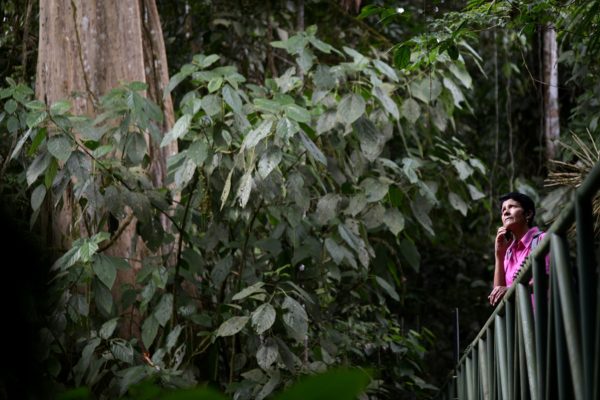
La Selva Biological Station is a prominent tropical ecology research station located in Puerto Viejo de Sarapiquí, in the northern region of Costa Rica. It is connected by a biological corridor to Braulio Carrillo National Park in the Central Volcanic Mountain Range.
Photograph by José Díaz
HAVANA TIMES – At the beginning of the 16th century, the territory that is now as Costa Rica was part of a spatial limbo between what was known as Castilla de Oro y Veragua. As far-fetched as it might seem, the lands held by the Duke of Veragua belonged to the descendants of Admiral Colón, and in 1556 don Luis Colón—his grandson and Duke of Veragua —gave these possessions to the Spanish Crown.
This fact, as Costa Rican scholars Claudia Vargas y Margarita Bolaños assure us, was what finally “could finally define with greater clarity the destinies of our territory.”
It wasn’t until 1561 that Juan de Cavallón—and later, more successfully, Juan Vázquez de Coronado—conquered what is today Costa Rica. According to historian Carlos Meléndez, Vázquez de Coronado, a Spanish noble and illegitimate son, didn’t get a mention in the history books until 1851.
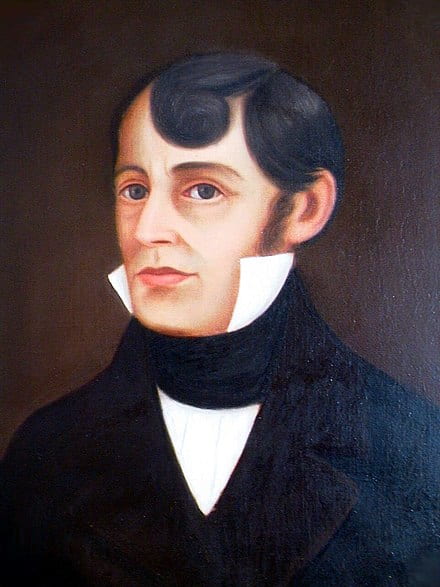
From that history and with documentation, emerged the idealistic portrait of a conquerer who was “more human, more gentle in the treatment of the Indians” was formed (Manuel María Peralta, 1883), later reinforced by declarations such as “the Mayor achieved submission more by persuasion than by force” (Francisco Montero Barrantes, 1892), a conquerer who is praised “above all for his generous and understanding nature” (Ricardo Fernández Guardia, 1909).
What is certain is that Costa Rica was conquered and its territory defined quite late. It was one of the last frontiers to be conquered. And the Spanish colonizers who arrived to the rugged land were less privileged than in other conquered lands.
Is Costa Rican exceptionalism to be found in this history? Is Costa Rica really different? It’s a matter close to my heart. In my four years as President of Costa Rica (2018-2022) and now teaching at the Fletcher School, at Tufts University, I’ve come to seek the answers not in one single place, but as a marvelous treasure chest of discoveries. Each of the discoveries has a value of its own, none is sufficient to explain the whole, but their connection forms a network that can provide some tentative answers about what makes my country different.
Heterodox Pragmatism I
Among these discoveries, one can appreciate different aspects of our singular history.
In 1869, the Constitution mandated that “Primary education for both sexes is compulsory, free and paid for by the State.” This ruling put education for both boys and girls at the center of the country’s aspirations.
In 1882, the death penalty was abolished in the country. María Emilia Solórzano Alfaro, the wife of the then-dictator General Tomás Guardia, spearheaded the movement. She experienced the death penalty up close, as her brother Lorenzo was killed by a firing squad for participating in a failed coup attempt.
The death penalty was used in political cases. Maria Emilia is remembered because she mobilized women to defend the lives of military prisoners. Finally, in 1882, Guardia decreed human life inviolable, a mandate that since has been an integral part of the country’s constitution.
In 1884, San José became the first Latin American city with electric lighting when 25 lamps were lit in the center of the capital. In 1882, the government had given Manuel Victor Dengo a concession to develop the hydroelectric plant that led to illuminate the bulbs.
Juan Mora the Teacher and John Quincy Adams the Diplomat
The abolition of the death penalty, the right to education and public access to street lighting came about in a historical context that established certain core values.
In 1824, only three years after independence, Costa Rica’s population was estimated at 61,746 inhabitants. Teacher and merchant Juan Mora Fernández was the first head of state. He was a man who would say things like “[since] the principal basis of a free government is showing its accomplishments and its progress should be given through the edition of newspapers, citizens are invited to establish newspapers in any town throughout the state.”
Mora Fernández gave out coffee seedbeds to stimulate the economy, asserting, “I want the state to be happy for peace, strong for the union, and that its children can cut one more ear of wheat daily and cry one less tear.”
During this period, John Quincy Adams was the sixth president of the United States and former Secretary of State to President James Monroe; he knew very well Europe’s imperial behavior. Because of this, he designed and proposed a doctrine, which President Monroe made official with his own name in a speech to the U.S. Congress in 1823: “[A]s a principle in which the rights and interests of the United States are involved, that the American continents, by the free and independent condition which they have assumed and maintain, are henceforth not to be considered as subjects for future colonization by any European powers. . .”
A new page in the region’s history had begun.
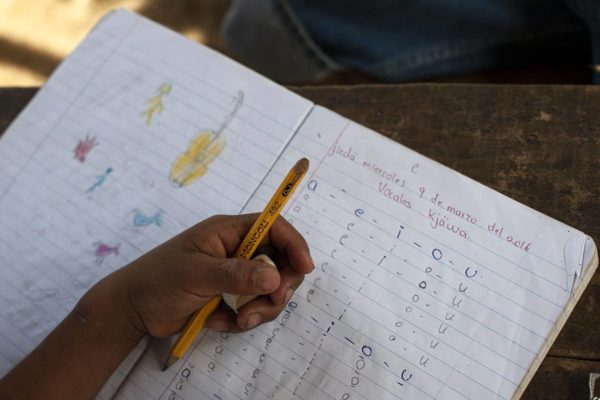
Costa Rica’s Relationship with a Powerful Neighbor
Eighty years from the declaration of the Monroe Document, much had occurred. The United States has expanded its territory from east to west, and it was now a major contender with the Europeans in the struggle for power.
The 20th century began with the Roosevelt corollary, an addition—nothing minor—to the doctrine conceived by John Quincy Adams. In President Theodore Roosevelt’s 1904 Congressional message, he spelled out that in addition to the demand that European Powers not intervene in territories in the Western Hemisphere, but that “the cases of chronic wrongdoing” in the region, “may force the United States, however reluctantly…to the exercise of an international power.”
This event marks history and is present up until today in one form or another, whether it be in democratic traditions, migrations, diasporas or baseball.
Cuba was militarily intervened in 1898 and 1902, Haití between 1915-1934, the Dominican Republic between 1915-1924, Nicaragua between 1912 and 1933, Panama with the 1936 Hull-Alfaro treaty that gave the strip of the Canal to the United States, Honduras with interventions in 1907, 1911 and 1924.
After World War II, when the United States established itself as the foremost capitalist power, and in the confrontation of the Cold War, the corollary became even more prominent against the threat of Communism.
The overthrow of Jacobo Árbenz in Guatemala through the intervention of the CIA in 1954, the intervention in the Dominican Republic yet once again in 1965, and the degrees of military presence in El Salvador, Honduras and Guatemala and against the Sandinistas in Nicaragua after they assumed power in 1979 were all reflections of this corollary.
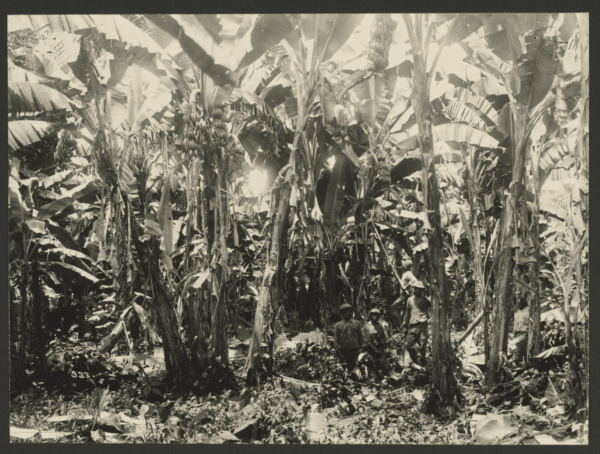
Costa Rica counted with the presence of the United Fruit Company—a U.S. company whose interests had been protected throughout the region, resulting in some of the military interventions, notably in Guatemala and Honduras. The U.S. Embassy pressured for its interests on many occasions. There was talk about a U.S. ship off the Costa Rican coast to pressure dictator Federico Tinoco to abandon his post in 1919. But there has never been a U.S. military occupation or invasion in Costa Rica.
When I’m asked why I believe Costa Ricans don’t emigrate as much as from other countries, I find part of the answer in this historical difference.
Heterodox Pragmatism II
The decade of the 1940’s may have been the most definitive in creating the actual world order and also in defining Costa Rica.
Costa Rica at that time had 670,000 inhabitants. It was still predominantly an agricultural country in which most people went barefoot, didn’t have much education and faced a life expectancy of 47 years. These were times of social transformation.
With experience as a practicing doctor and inspired by the social doctrine of the Catholic Church and the agenda of the “Malines Conversations” promoted by the Belgian Cardinal Desiré-Joseph Mercier, Dr. Rafael Ángel Calderón Guardia inaugurated a period of social reform during his presidency.
He achieved advances in education—the founding ot the Universidad de Costa Rica (1940)—, in social security and health—the creation of the Costa Rican Social Security Institute, “la Caja” (1941) and social and labor rights —an article in the constitution for Social Guarantees (1943) and the promulgation of a Labor Code (1943).

He accomplished all this with an unusual and eclectic alliance, his Republican Party with the Catholic Church of Monsignor Víctor Manuel Sanabria and the Communist Party of Manuel Mora, one of his critics. This episode explains an important aspect of Costa Rica, even now, eighty years later. The world was at war. And perhaps because of the conflict, all these extraordinary changes were not noted beyond the country’s borders.
The 1940’s have more to offer in our understanding of Costa Rica’s differences, more treasures from the trunk, so to speak.
The 1948 elections, in which Calderón Guardia sought to return to the presidency, ended with accusations of fraud. A revolutionary movement headed by José Figueres Ferrer, an former exiled critic of the government, rose up in arms.
The revolutionaries win the war and take power. The traditional logic would indicate that a military dictatorship would be installed and the reforms reversed. But this is far from what happened.
Don Pepe, as Figueres is known, and the Founding Junta of the Second Republic launched an agenda of deepening the reforms, with the creation of a Supreme Elections Tribunal to guarantee clean and democratic elections. It also established the Costa Rican Energy Institute to bring electricity to the country, nationalized the banks, granted female suffrage and prohibited the Communist Party, a prohibition that lasted until 1974.
Among other notable things, it did not erase the achievements of its war rival—something that is seldom seen in politics and conflicts. These works have endured up until today. Moreover, in 1948, sensing the role armies would play in Latin American dictatorships, on December 1, 1948, Figueres abolished the armed forces of Costa Rica.
En 1949, Figueres and the Founding Junta handed over power to Otilio Ulate, who was declared the winner of the 1948 elections. And since 1953 until today, Costa Rica has been a democracy with uninterupted elections. According to The Economist, it is among the 20 most robust democracies in the world.
Beyond Whitening
Only a few years ago, the revised constitution recognized our country as multicultural and multiethnic. Even if sources and historical data about racial mixing—mestizaje—is central to the history of Costa Rica, during the 19th century as part of state formation and national identity, the country undergoes an inverse process, to go from mestizos to whitening.
The research by Ronald Soto Quirós of the University of Bordeaux shows how in the 19th century, there was a double reinforcement of this discourse in two directions, between the external discourse of European and North American travelers, merchants, chroniclers and botanists, and the Costa Rican elite itself, in an effort to impose a racial type, not a mestizo, but one that is white.
An emblematic example is the narrative by the Scotsman is Robert Glasgow Dunlop in 1844:
“The inhabitants of this state are nearly all white, not having mixed with the Indians as in other parts of Spanish America, and the few who are coloured have no doubt come from the neighbouring states. Their character is different from all other parts of Central America: they are industrious, although not fond of hard work; every family has a small coffee or sugar-cane plantation.”
Part of this image, of course, comes from gaps in the ancenstral memory. Costa Rica is a land of lost languages. Unlike in the rest of Central America, where the Náhuatl or Mayan languages still have millions of speakers, much of Costa Rica’s Indigenous memory has been erased or lost.
Orosi, Sarchí, Tibás, Turrucares, Tapantí, Garabito, Escazú, Siquirres, Aserrí… are all Costa Rican words. They name places, cities. We use these words every day, but we ignore, for the most part, their original meaning in Huetar, now a dead language.
As late as the 16th century, Huetar was the common language in what was the province of Costa Rica, but it was banned in 1676 by Governor Benito de Noboa Salgado. From scholars such as Adolfo Constenla y Miguel Ángel Quesada Pacheco, we know fragments of our lost origins. Bribri, cabécar, guatuso—although they are still spoken in Costa Rica—are on the verge of becoming lost languages; they are part of these Chibcha languages.
Josefa de Flores: Our Grandmother, a Slave
In 1771, Costa Rica had 23,371 inhabitants, with 13,995 or 59.9 % mestizos (mixed race between Indigenous and White) (59.9%), 4,218 or 18% mulatos (mixed race between Black and white), 2,839 Indigenous (12.1%) and 2,319 Spanish (9.9%)—which suggests an advanced process of race-mixing.
In 2018, when I was running for president, Mauricio Meléndez of the Academy of Geneaology published an analysis of my ancestry.
He showed that my maternal grandparents, Manuel Quesada Castro (1914-2007) and Noemy Alvarado Romero (1920-1984) were cousins and at the same time great-grandchildren of Segundo Venegas Picado (1807), “who was the great grandson of María Ambrosia Barboza, a mulata slave of Father Gaspar Cascante de Rojas, commissioner of the Holy Office of the Inquisition in Cartago. The priest gave his daughter Lorenza de Flores y Barboza two slaves: Ambrosia her mother, Josefa de Flores. In 1727, Lorenza freed the two slaves.”
Josefa de Flores, la Chepa, as she was called, was born around 1700 when the population was less than 14,000 people; today, ten generations later, Josefa is the grandmother of thousands of Costa Ricans like me.
That is, hundreds of my fellow citizens are descended from a mulata slave who was property of the priest in charge of the Holy Office of the Inquisition. In his book, Heritage of the Conquistadors, Samuel Z. Stone describes in detail the geneaology of Costa Rican rulers, as well as those of Central America, which, in the case of Costa Rica, Vázquez de Coronado has a central role.
Efforts like those of Méndez complete the picture: “The myth of a very white Costa Rica, pure and clean” should be exchanged for that of a Costa Rica mixed in its origins, mestiza and mulata, a Costa Rica that is always diverse, multiethnic and pluricultural.”
The Burden of Tradition
As we peep into this treasure chest of discoveries, as we look critically at the past, its histories and its myths, we must take into account where these traditions have brought us—successes and challenges. Tradition has weight. If it is good, it pushes us toward new and positive fruits.
In 2023, life expectancy in Costa Rica was 81 years. The population is just over five million people. The Universidad de Costa Rica, a public institution, is one of the five best in Latin America, and child labor statistically has been eradicated.
The Costa Rican Electricity Institute, founded in 1948, in its quest for autonomous energy , is today responsable for the fact that more than 99% of the country’s electric energy is clean and renewable.
The abolition of the army and its related institutions, together wih the legacy of 200 years of independent life, cemented the majority support for peace and democracy in Costa Rica.

This tradition stimulated achievements such as the hosting of the Interamerican Court of Human Rights, of the University for Peace (1980), to declare Perpetual Neutrality (1983) in the context of the Cold War, or to achieve, together with Central America, the Peace Agreements that earned former President Óscar Arias the Nobel Peace Prize (1987).
The relationship with its exuberant nature also evolved. In the 1970s, the country created a network of national parks. Today, its’s estimated that the territory of Costa Rica houses 6% of the planet’s biodiversity. When very few people were talking about climate change in the 1990s, the country innovated the first system of environmental payments to the holders of private forests for the services forests provide to people, that is, an incentive not to cut down trees.
From 1980 to the present, Costa Rica has more than doubled its forest cover, now almost 55%, an important example that it is possible to reverse deforestation in the planet.
Building on this legacy, in the current battle to abolish the use of fossil fuels, Costa Rica launched in 2019 the first plan for decarbonization in the world, after the 2015 Paris Agreements. And in 2021, it took it conservation policies to the seas, protecting 30% of its ocean, thus becoming a leader in meeting the global goal agreed upon by 190 países in 2022 to protect 30% of ocean and land resources by 2030, in the Biodiversity COP15.
In 1980, Costa Rica’s economy was based on the export of coffee, sugar cane and bananas; today, the main exports are medical devices and services, as well as traditional and non-traditional agriculture. And the country’s environmental achievements laid the base for a successful and clean tourist industry, distributed throughout the country. In 2021, Costa Rica became the first country in Central America to join the Organization for Economic Co-operation and Development (OECD).
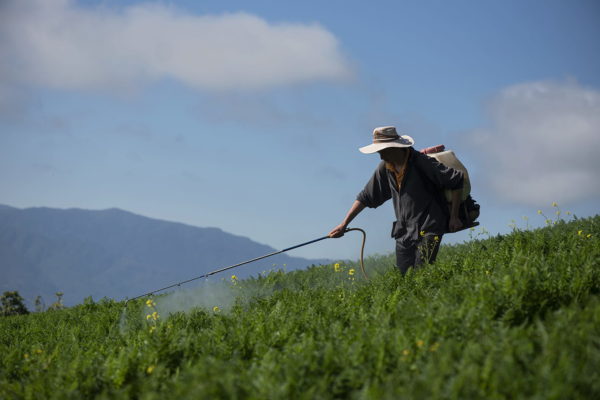
This chest of curiosities, of discoveries, is a mere brushstroke. It is does not talk of the annexation of the Partido de Nicoya to Costa Rica (1824) or the Campaña Nacional, the war against William Walker and the Filibusters (1856-1857). Nor does it talk about the shipwreck of a Danish boat carrying enslaved peoples that floundered off the coast of what is now Cahuita, or the mysterious Indigenous spheres of the Delta del Diquís. It also does not narrate the story of how Costa Rica in 2020 became the first country in Central America to legalize same-sex unions.
Woman account for half the history of Costa Rica, and as a society that has struggled to cast aside its patriarchy, much of this story is only beginning to be told.
There are many challenges. The traffic in the cities is worsening and pesticides are used excessively. Inequality is growing, making the country one of the most unequal in the most unequal región of the world. As a contemporary democracy, we battle with the challenges of populism and post-truth. The presence of organized crime threatens our historical achievements.
The serious strength of our legacy also poses risks, that of taking it for granted. Or not being capable of constant innovation and of taking what we have received for generations to a new level of well-being. As the saying goes, “Blessed are those who plant trees under whose shade they shall never sit.”
The history of a country and its people, like all things human, is marked by a mix of light and shadow. It’s a narrative of contradictions, where absolute clarity is elusive, except within the ongoing struggle of the human spirit.
Is Costa Rica exceptional or different? I say that it is unique, and that, if its experience and some of its differences serve as a reference, it’s not to imitate them literally but to know that, in the human experiment, sometimes it’s good to be heterodox, creative and to think of that tree that will give shade to future generations. Also that sometimes having less in the material helps more in what is essential. That human wealth may be measured in nature, in the desire for a good life and peace.
It is a reminder that we are interconnected in the web of time, rather than confronting one another. What will be our next brave steps for Costa Rica?
The future reader will, in their present, have the answer. An answer that can be found as always in the chest of discoveries.
—–
Carlos Alvarado Quesada served as the 48th President of the Republic of Costa Rica from May 2018 to May 2022. He is currently a Professor of the Practice at the Fletcher School of Law and Diplomacy at Tufts University.
*This article was first published by the Harvard Review of Latin America.





